Link building for SaaS doesn’t have to be difficult.
In fact, building links for SaaS companies is probably one of the easiest spaces to build links in simply due to the sheer amount of strategies and tactics which can be implemented to quickly scale your link profile.
We’ve compiled a list of our top battle-tested link-building strategies to help you start building backlinks at scale for your organization.
The below SaaS link building strategies are the exact strategies we help clients to implement to quickly scale their link profiles and dominate the SERPs. 👇
Building out tools and calculators that provide value for your target audience is an excellent way to both:
Ideating tools, calculators, and other resources which will help to drive links, rankings, and demo/trial sign-ups is a big part of our link-building strategy for SaaS organizations.
Many SaaS orgs already have these tools at their disposal, it’s just a question of mapping those back against proper keyword research and intent, and building those out on the website with some educational content.
Clockify is a great example of a SaaS that leverages tools and calculators to completely dominate the SERPs:

Their fifth most-linked to page on the website is a free time card calculator.
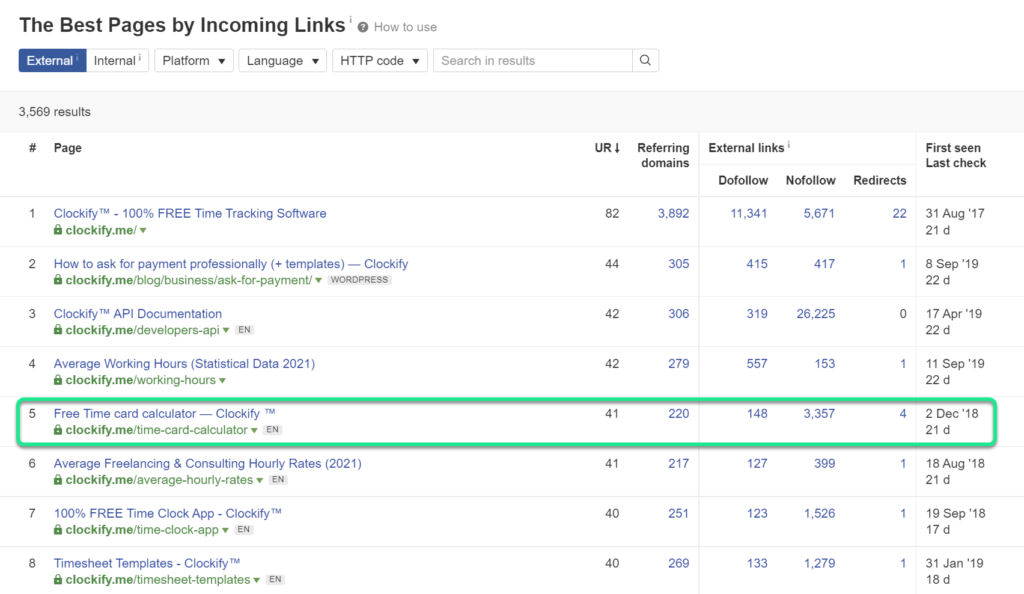
If your team is strapped internally for bandwidth and resources to build these tools, we have the perfect solution for you.
Grid. is a nifty little SaaS tool that allows you to build spreadsheets into an embeddable resource on your website.
This is an excellent short and mid-term solution for building out tools and calculators when you don’t have the internal resources at hand to do so.
We’ve even built our own SaaS SEO ROI calculator using it, which is the perfect resource for our audience trying to gauge what to expect out of working on an SEO campaign with our team.
There are three core different types of content that exist:
When working with clients, our core purpose is building out a content strategy that predominately falls into buckets one and three.
Content that is world-class, and the best content in your industry that educates your audience (as well as the visuals and user experience is also on point), is not only going to allow you to build out your content leads which you can nurture over time, but it’s going to allow you to quickly scale your link profile.
Find out what problems and roadblocks your audience is facing in their everyday jobs, which doesn’t even in the end have to be an exact solution your SaaS provides as a feature, but go and help them solve this challenge.
Build an extremely in-depth, actionable guide that can help them smash through their challenges, and that educates and provides value.
HubSpot is a winner on many fronts in this arena.
Take for example one of their most-linked to and most-trafficked pages:
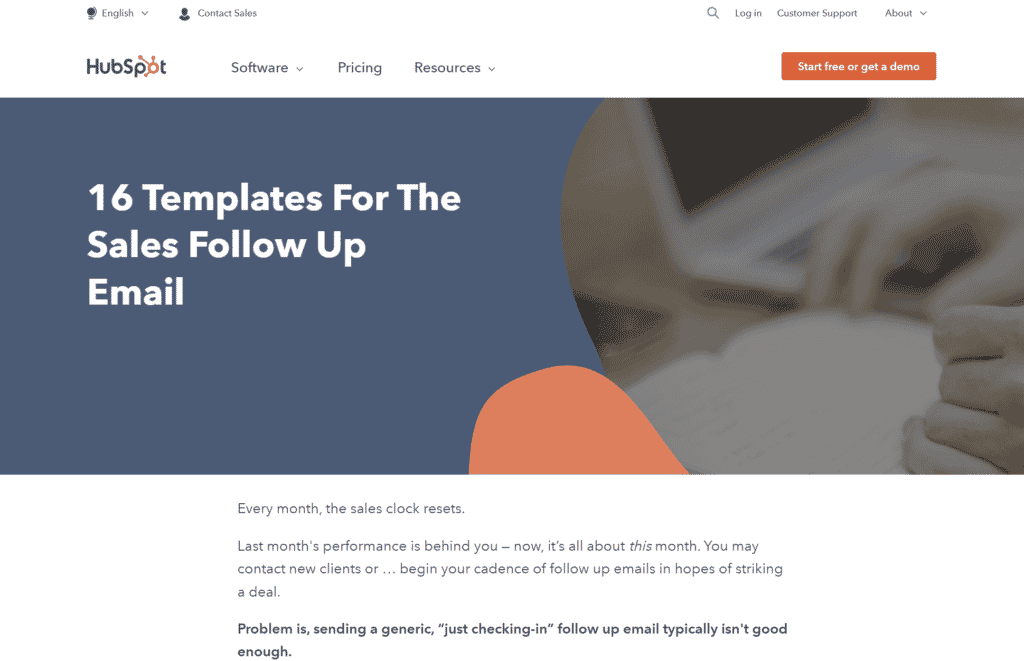
It provides value and solves a problem.
When you build this style of content, as well as promote and distribute it, it’s naturally going to pick up links over time.
Journalists and websites alike LOVE linking out to other studies, statistics, and trend pages.
There are two ways to go about building out topics for your industry that are relevant, and can act as link magnets:
Now, conducting your own in-house study requires time, resources, and a lot of planning.
Although this is the preferred route to go, utilizing existing statistics and referencing them also works extremely well to build links.
Think about it – someone is writing content on a topic in your industry, and they want to quickly reference a statistic.
Your page ranks, with all of the statistics on that given topic.
You’ve made their job’s much easier, and they’re likely then to link to your single-curated statistic piece as a reference point in their content.
Exploding Topic’s entire blogging strategy is basically built on this strategy:
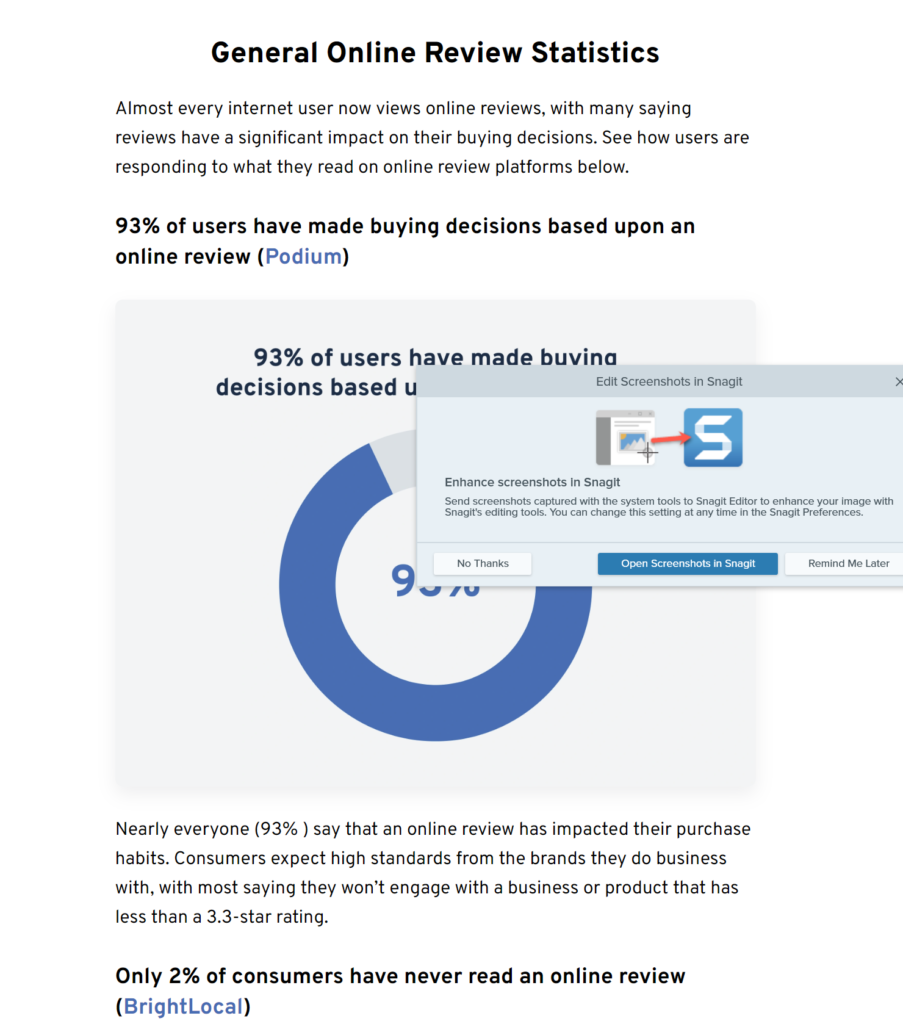
They essentially go out, grab statistics for a given topic, link to them as a resource, and curate these topics all into one single piece of content.
Their team also builds out visuals to go with the content, making it a super resource to link to.
Exploding Topic’s blog has racked up over 3.22k Referring Domains, and accounts for roughly 87% of all of their organic traffic:

This is the exact strategy they also use to fuel the usage of their tool, which is built around monitoring topics as they’re trending.
API documentation and how-to guides on using your software are other resources that you can leverage to bolster your link profile.
Think about it.
API and how-to documentation is a resource, that other websites are likely to reference.
By building your documentation, especially how-to guides in a structured way, not only are you providing needed information to your userbase but you’re also building linkable assets that other websites will naturally reference in relation to using your software.
Take Zapier’s API and documentation directory as an example:

This directory has over 193 RDs pointing to it.
Why?
It’s by nature a resource that will get linked to.
Publish your documentation and API usage guide in a way that is structured, and it’s bound to pick up links as you grow.
This one happens ALL the time.
Another website/business mentions your business on their website and doesn’t add a link to it.
Even worse, they link to the wrong domain.
This is considered a branded mention without a link.
The best way to handle branded mentions without a link is to simply reach out, and ask for them to link over to your website.
Related Content: Internal Linking for SaaS
There are plenty of tools on the market to allow you to monitor brand mentions for your business, which can be extremely valuable not only for link-building efforts.
Awario is a great choice that will allow you to plug in one or multiple queries (i.e. business name, founder’s name, etc.) and you’ll receive a notification to your inbox every time it’s found newly mentioned online.
Roundups are a very effective way to quickly build backlinks at scale.
Roundups are curated lists of the best content, quotes, or tools in a particular industry.
UserGuiding, a SaaS software that helps onboard users with product walkthroughs has an excellent roundup example they’ve created for “Top 11 HR Management Software Tools”
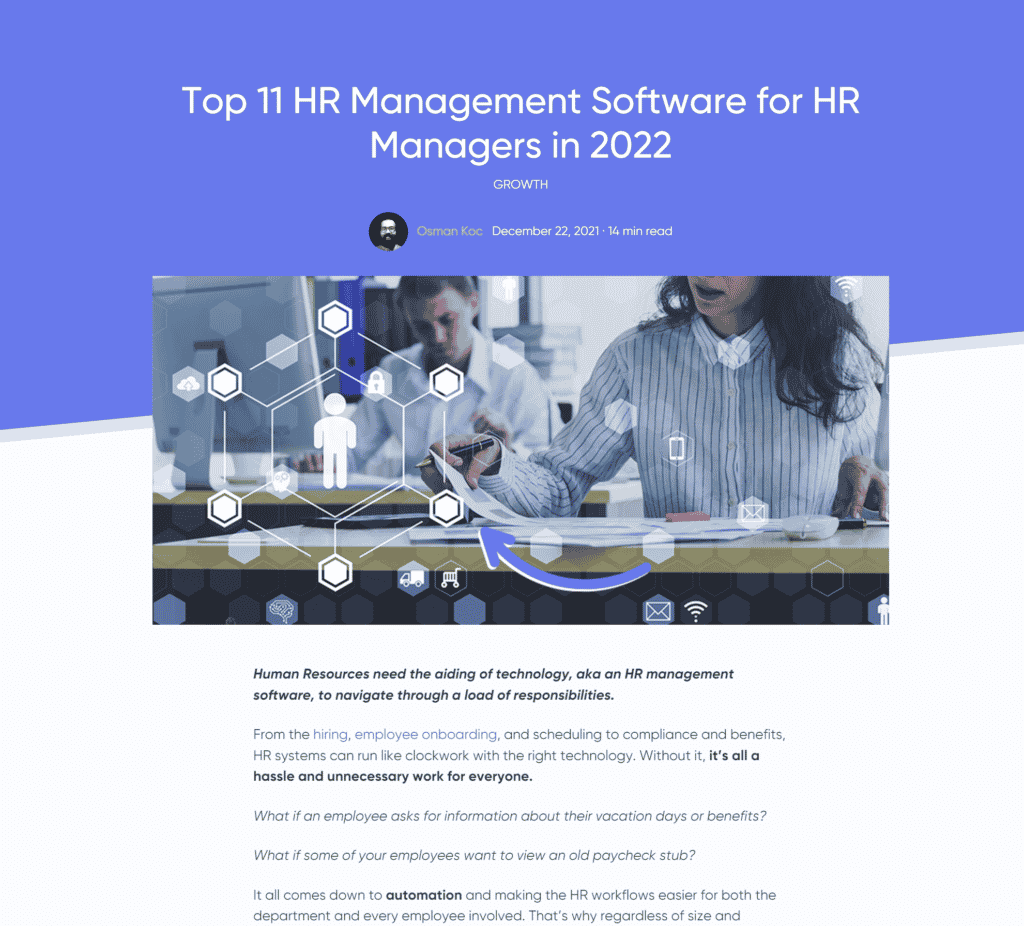
This is a great example of a piece that can pick up a ton of links if you provide value.
Not only can you build your own round-up, but you can find round-ups to also be hosted on:
Simply go to Google and use the following query without quotations:
intitle:roundup “HR software”
You can use these to find other existing round-ups to pitch and get on their list.
Struggling to grow organic demos signups? Rock The Rankings is a top-ranked SaaS SEO Agency that helps SaaS businesses make organic their customer acquisition engine. We’ll create a free marketing plan for your business, and walk you through step-by-step exactly what needs to be done to grow faster.
Widget link building is probably my personal favorite on this list.
Why?
So many SaaS brands have built killer link profiles naturally by having an embed or widget that’s part of their software, and they weren’t even aware of it.
Widget link building is when you have an embeddable object, normally a snippet of code in JavaScript, which the client then embeds on their website to display statistics, trust, or some other mechanism that your service provides.
Think of SaaS businesses in the review collection and reputation management space, like TrustPilot, BirdEye, YotPo, etc.
BirdEye provides a ton of different functionality, but one of the pain points they solve is allowing businesses to both collect and display testimonials on their websites:

When a client of TrustPilot embeds the review display widget on their website, they’re naturally providing a link to TrustPilot’s website, which is counting towards their link profile and overall authority.
Trustpilot has over 1.87M referring domains pointing to their website and a Domain Rating of 94 according to Ahrefs:

Those are just absurd numbers.
If your SaaS has a natural application for a widget or embeds on the client’s website, you’re going to have a very easy time scaling up your link profile as you acquire customers.
It’s also possible to think outside of the box here to expand your functionality for this sole reason.
From a customer acquisition standpoint, building a SaaS which naturally has this application would probably be enough for most SEOs to dive straight into building an MVP and building up activations and MRR through organic in at a very fast pace.
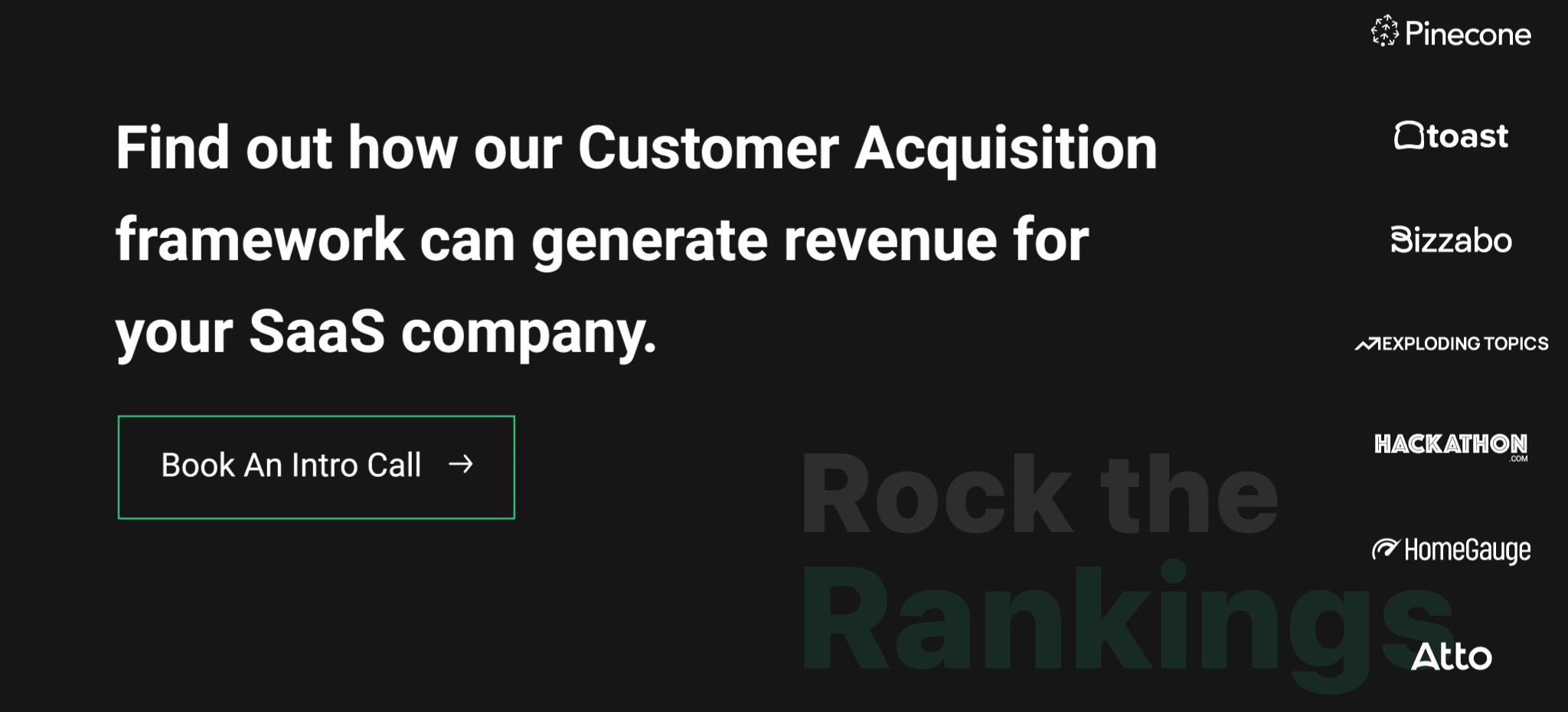
Everyone loves to build their own social proof, and many businesses add reviews and testimonials to their pages to help build trust in their audience.
Reviews and testimonials are an excellent way to grab free links (and brand mentions) from companies whose service/software you use.
Oftentimes, this happens naturally, but you can also reach out directly and give them a head’s up if you’re interested to be featured on their reviews and testimonials page.
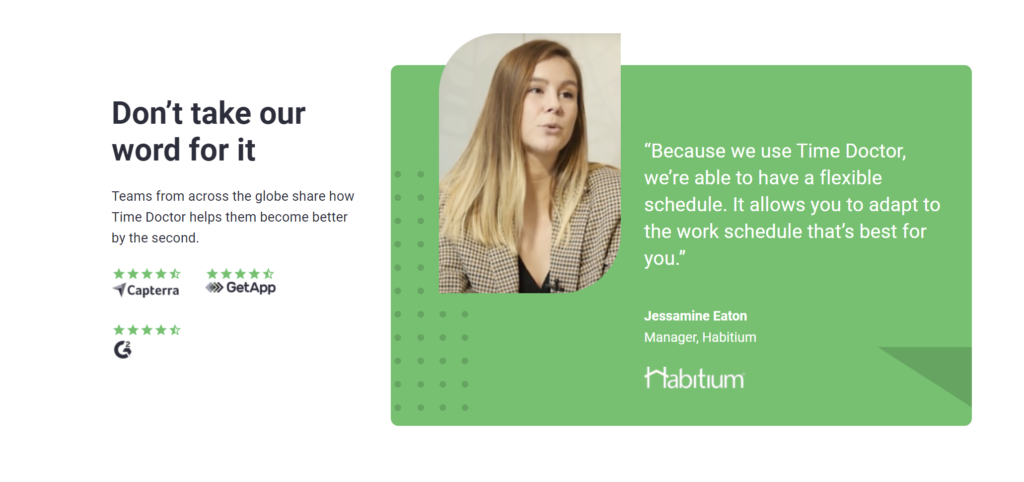
Many times, businesses will link out directly to your website from the reviews and testimonials pages.
Help a Report Out (HARO) is a well-known networking tool that allows journalists to publish a story they’re looking to cover and to connect them with businesses and experts on that topic to do a story on.
Journalists always need content.
HARO can be an absolute goldmine if you put in the time to monitor opportunities, and pitch your business.
Once you signup, you’ll get daily opportunities straight to your inbox that fall under different categories, including Business and Finance, as well as Technology:
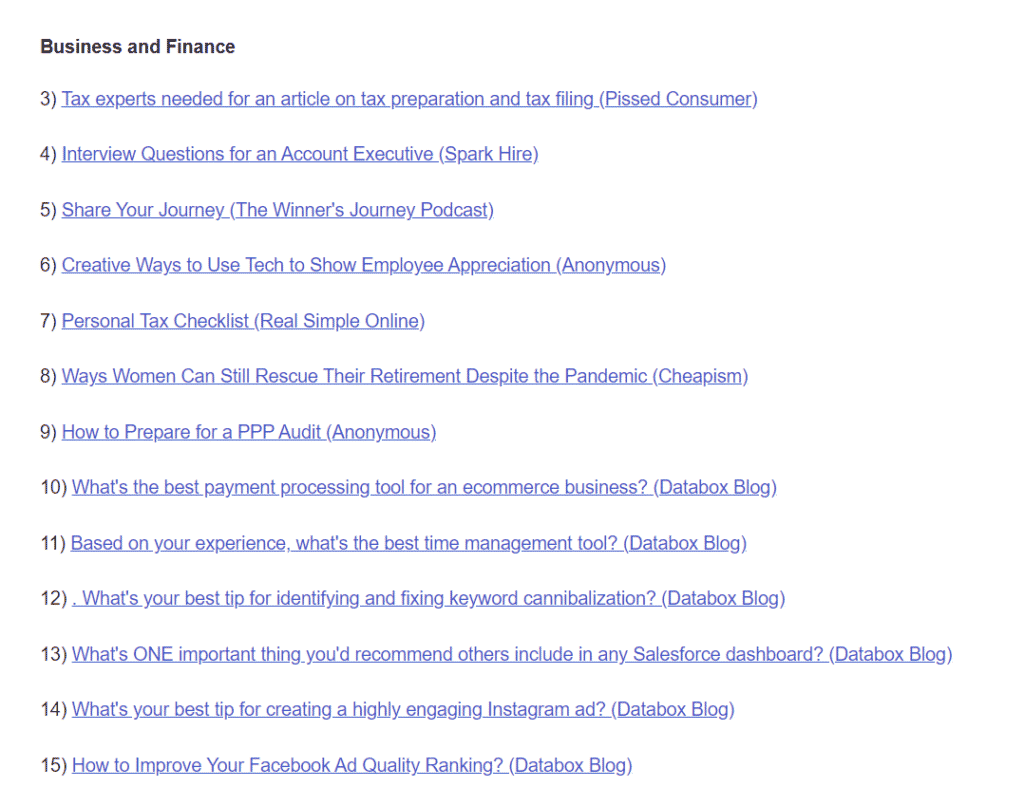
You can click into any opportunity, and you’ll have the full details of what the story is about, and what they’re looking to cover in-depth:

Now all you have to do is reach out to the email listed, give your answers and wait for a follow-up or interview.
HARO is for free, and all you need to do is sign-up as a “source” and you’ll start to get opportunities straight to your inbox.
We’ve personally coached clients on link building (that had minimal link building budget) to go out and monitor and pitch journalists on HARO, and to use their product angle to gain brand awareness and links.
We’ve personally built links from American Express, MSN, Forbes, and many other highly-authoritative websites simply by mon
Guest posting is an age-old-tactic in the link-building arena, but it still works.
What does basically any marketing and content team want for their website?
More high-quality, valuable content for their audience.
Where do you come into the picture?
You build a genuine, quality relationship with your target businesses, and eventually ask to create some awesome content for them to publish that is relevant to their audience.
Building these relationships, and handling outreach is a time-consuming exercise.
Guest posting can be a very lucrative way to build links, but it takes a skilled team with a process to accomplish.
One of the core ways we build links for our clients is through guest posting opportunities, which has landed us on hundreds of high-authority, quality websites.
There are plenty of small and medium size SaaS directories for your niche which provide reviews and additional information on relevant products where you can be listed.
Think outside of the box here – sure, you should be on G2 and Capterra, but think within your industry which directories and review websites specifically exist, and run a google search.
Just by Googling “HRMS directory” for example, you’ll find plenty of relevant directories and smaller review sites focused on your industry where you can be published at.

Not only is this a great way to build additional do-follow links, but it’s also a great way to get in front of your audience especially for niche directories that rank well for software-solution-related queries.
Taking a deep dive into your competitor’s link profiles using a tool like Ahrefs can present a ton of opportunities to build out the same quality links.
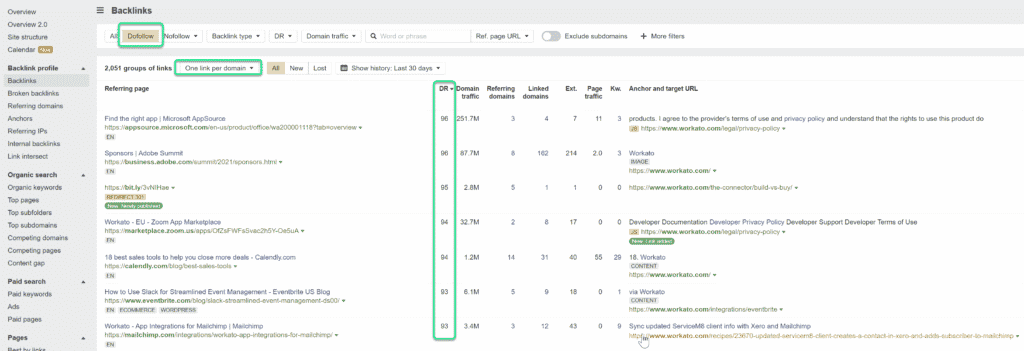
You can easily compile a list of competitor’s links, and find ways to get placed there:
There are many ways to replicate competitor’s links, once you know exactly what they are.
The glossary page method is one of my personal favorites.
The strategy is simple:
Set up a glossary resource with relevant terms and jargon that gets thrown around in your industry to capture searchers looking to find a definition of the term.
Provide your expertise on the topic and educate the audience.
An immediate example that comes to mind of a SaaS organization that’s done this perfectly?
BambooHR.
BambooHR has a massive glossary page that is accessible via their header navigation that covers pretty much every HR topic under the sun.
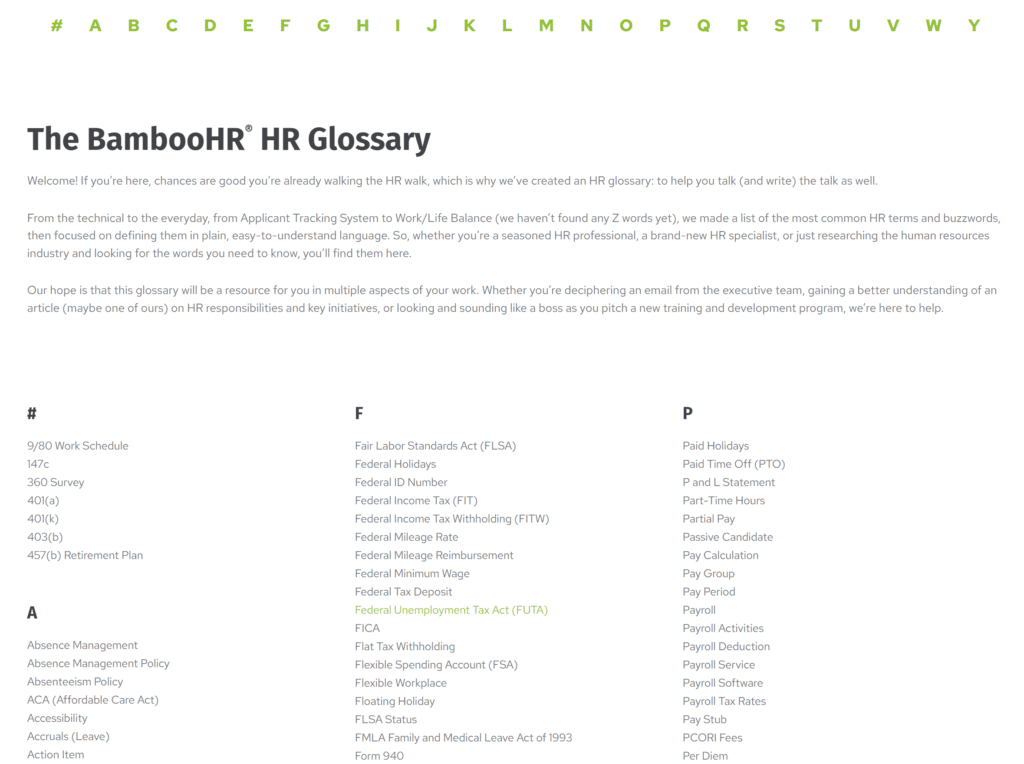
The result?
266k organic keywords ranking and 356k in traffic value generated from this resource alone.

This section alone accounts for roughly 43% of all of Bamboo HR’s organic traffic.
The glossary section has landed BambooHR links from websites like Wrike, GlassDoor, PayScale, AOL, BuzzSprout, and many, many more.
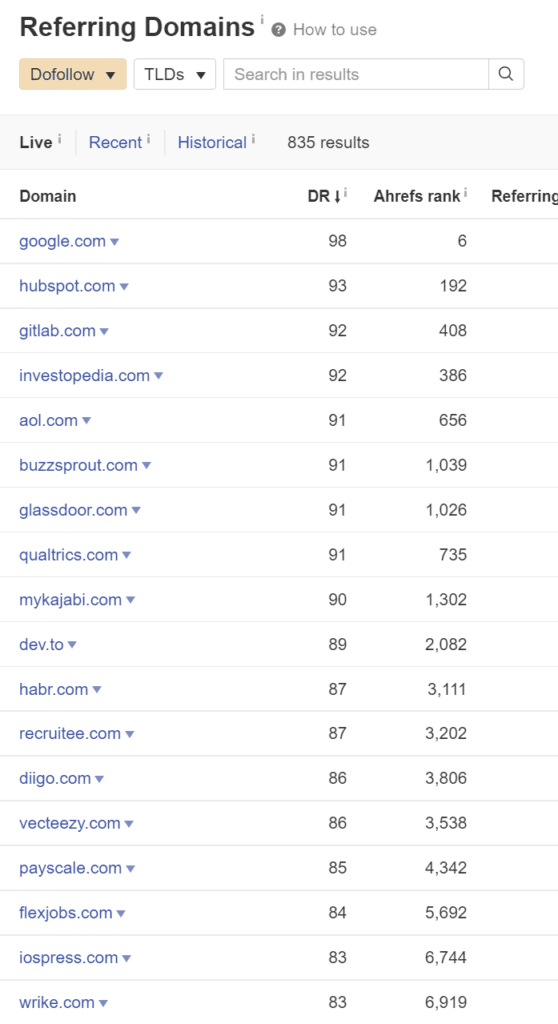
This strategy works especially well if you typically use a lot of jargon in your industry. The more niche, the better this can work.
👉 Struggling to implement scalable backlink strategies? Not seeing the results you want from your SEO efforts? If you’d like to learn how we can help you grow faster and overcome those hurdles, book a Free Grow Faster Session with our veteran SaaS SEO team. We’ll walk you through a customized SaaS marketing plan for your business, and show you how you can start scaling MRR faster.
Have a lot of industry-specific terms, where many are unfamiliar with what exactly they mean?
This is the perfect strategy that provides:
A totally killer strategy that you too can implement that can have a big impact.
💡 Note: The next three methods on our list are considered in the grey area when it comes to link building. Google basically considers any method of attempting to add links to your website and have an impact on rankings as against their ToCs. The reason why we’re mentioning them on this list is to educate and make our audience aware of what we see going on in the world of link building and what others are afraid to mention. We would not personally recommend these practices or anything outside of natural link acquisition, meaning building links through creating and distrubting great content.
Let’s be honest – almost everything’s for sale in terms of links.
Many of the most authoritative websites out there are selling link placements and articles in exchange for compensation.
Paid link acquisition is something that happens all the time, and it’s highly likely that a handful of your competitors are spending money to acquire links by paying for those placements.
Paid link acquisition is something that is also common among PR agencies and firms that have existing relationships with these websites, and pays for their placements to get their clients quality links.
The cost of paid link acquisition adds up fast.
It’s not uncommon for high-quality links to sell for prices in the 5-digit range for a single link.
So, how can you beat the competition when they have deep pockets and are scaling links fast simply by paying for them outright?
Focus on building higher-quality content, and content distribution using the methods above.
If you build a process and link magnets using the methods above, you can quickly scale your link efforts for minimal cost, and without shelling out 5-digits per link.
When your business acquires another business, you should be leveraging the old business’s domain authority and 301-redirecting that domain in a strategical way into your domain.
Why am I bringing this topic up?
Just this past week, I’ve personally seen two separate domains for purchase which are previous businesses that have been acquired, and simply left up for grabs.
Both of these domains have no trademark active on them, and both have killer link profiles.
They’ve been sitting for months when their link power could be leveraged by the acquiring company.
Although 301 re-directing of expired domains occurs quite often and is done in a non-natural way (i.e. no acquisition has occurred) this is one to keep an eye on and in the pocket for the future.
This technique would also fall in the grey area, but we see it happening more and more often as it still works very well to quickly bolster up your link profile with relevant, quality links when done properly.
Did you know?
Businesses are selling their existing content pages which are ranking, valuable, and driving traffic and demos/trials to other businesses.
And it’s a lot more common than you think.
How does this work?
This is a quick shortcut that’s most definitely in the grey area.
Why do we mention it?
We see it happening a lot more often than you’d think.
Just some food for thought.

If you’re embarking on the journey of SEO and building an organic presence, backlinks simply can’t be ignored.
Backlinks are the cornerstone of search rankings, and if you’re not actively building links for your SaaS’s content marketing efforts, you’re unlikely to see the results you’re hoping for.
Building quality and natural links over time comes from:
When you have these in check, you’ll be able to consistently generate high-quality backlinks for your domain.
Founder of Rock The Rankings, an SEO partner that helps B2B SaaS brands crush their organic growth goals. An avid fan of tennis, and growing micro-SaaS businesses on the weekend. 2x SaaS Co-Founder – Currently working to build and scale Simple Testimonial.
Sorry, no posts matched your criteria.
Book a 1-on-1 call with our founder and walk away with a custom plan built for your business. Growth starts now.
BOOK INTRO CALL